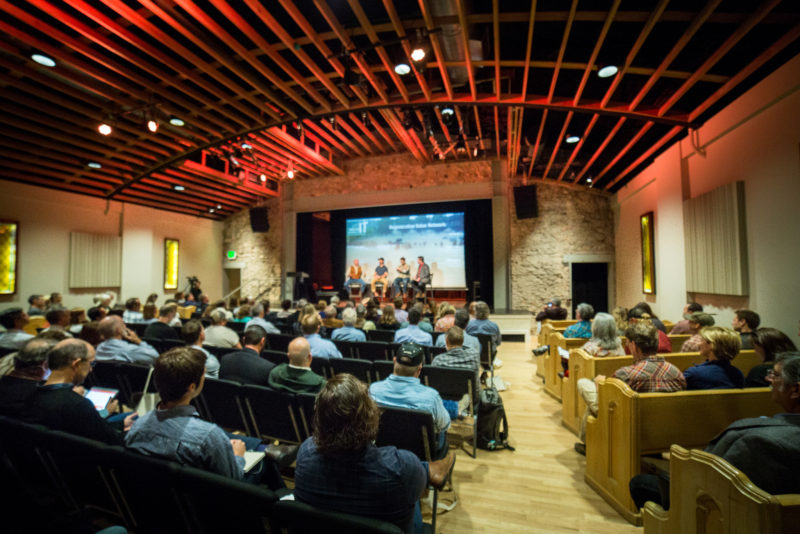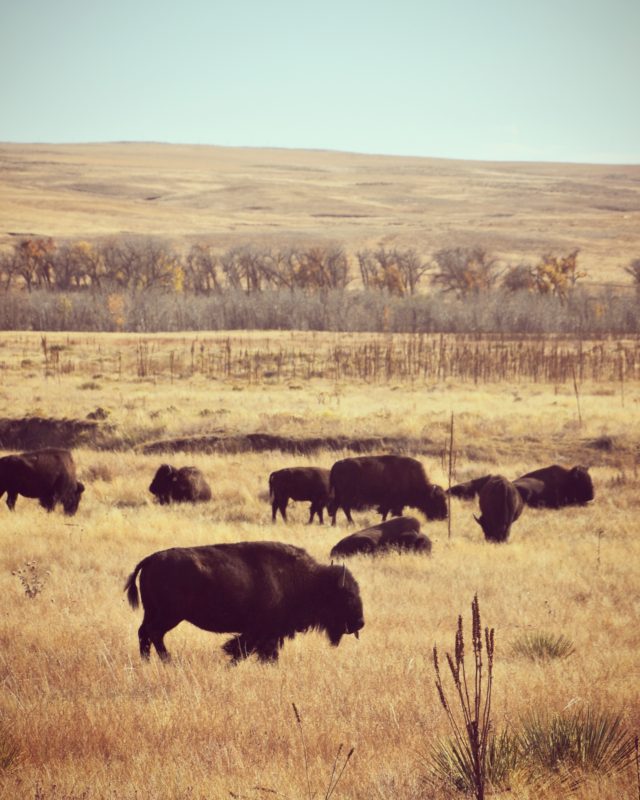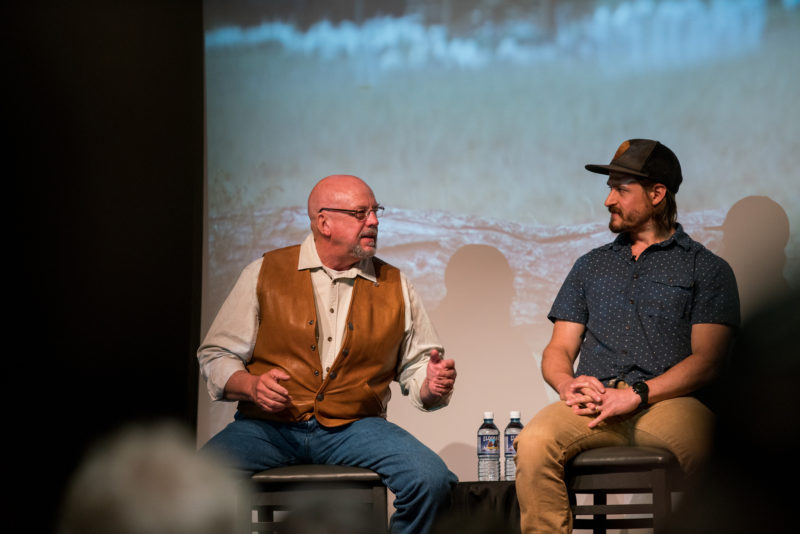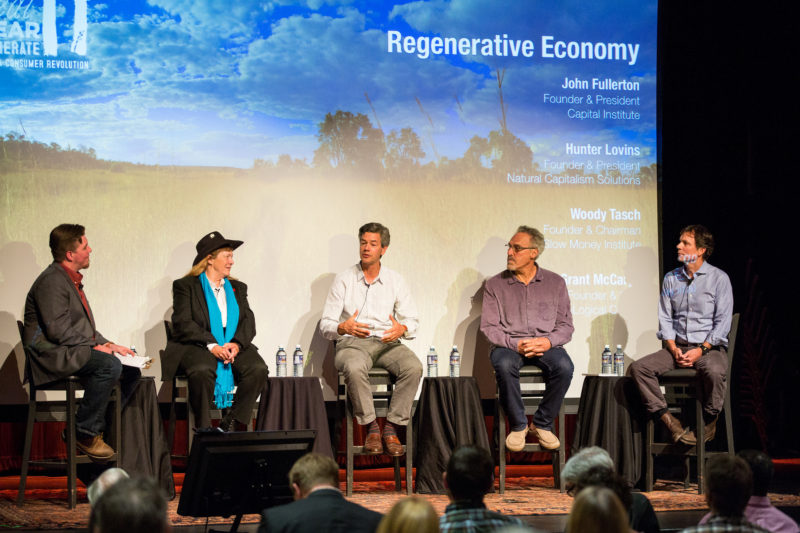As you might know, Robb and I are HUGE fans of The Savory Institute. He and I were both invited to their recent conference in Boulder. Robb had another event he was committed to, but I hopped on a plane and was so thrilled to be a part of if.

I have to say it was one of the best conferences I’ve attended. As a bonus, the day after the big event, I got to visit a bison ranch that practices holistic management. Having never seen bison up close before, this was a real treat. The mix of attendees was fascinating. I had a chance to speak with ranchers, marketers, and venture capitalists who are all deeply interested in the work of Allan Savory (if you haven’t seen his famous TED Talk, check it out here.)

Bison grazing at West Bijou Ranch in Strasburg, Colorado
Allan talked about how he’s in the “departure lounge.” This may sound depressing to you, but coming from him, it was sobering yet inspirational. He said he’ll never see the full results of what he’s started, and how important that is. The other folks I spoke with at the conference all had the same mission in life: To be part of something so big, that they will never fully see the results. I think that’s why I loved being there. In the world of quick profits, keeping up with the Jonses, and shallow, short-term goals, I can sometimes feel discouraged. It’s not often that I am surrounded by people who are passionate about a long term vision of creating a better future.

The folks at Savory have been working with i.e. Media to produce a series of incredibly high quality short films that illustrate how holistic management can dramatically reverse desertification and regenerate not only the soil, but whole communities. The films were revealed at the conference and are being released one by one. In my opinion, film is absolutely the perfect way to illustrate the effects of holistic planned grazing. You have to see it to believe it, and the crew did an artful job of telling the story. To me, it’s much more powerful than any other media, especially in the story of sustainability. Some of my favorite companies were featured, like Maple Hill Creamery (you can see them in the dairy episode) and Epic Provisions, who are featured the “Story of Meat” here.
The Story Of Meat from Savory Institute on Vimeo.

Rancher Will Harris and Taylor Collins from Epic Provisions talk about how they were connected through The Savory Institute
At the end of the conference, they revealed their Land to Market Program. The goal is to empower consumers to know which products are healing the environment as a result of how they were produced. This verification is outcome based, where farmers and ranchers have to scientifically demonstrate, with empirical data to back it up, that they are rebuilding broken ecosystems.

The panel of investors discuss long-term, “slow money” goals instead of short sighted, quick returns
I also had the chance to speak the following week at the the Agrarian Learning Center in Hudson, New York as part of the Savory Hub events. I was joined by Seth Itzkan, Co-founder and Co-director of Soil4Climate, Shannon Hayes, author of several books including my favorite Radical Homemakers, Dairy farmer Phyllis Van Amburgh, who runs dharma Lea, and the folks from Maple Hill Creamery. I gave a short presentation about the how we need to be eating more protein, less CAFO chicken, and stressed the nutritional importance of consuming meat and dairy sourced from holistically managed farms.
I can’t tell you how much I believe in the work of The Savory Institute and am thrilled to support The Land to Market Program. Some people are able to connect directly with their food producers but most are not. There’s currently no good way for consumers in traditional stores to discern how their meat was raised. There’s a big difference between well-managed meat and simply “grass-fed,” which could simply mean the animal was on the same, overgrazed paddock every day. I’m particularly excited about their verification for fiber and leather. It was eye opening to learn how many hands are involved in the supply chain, and how there’s currently no way to tell if your sweater or handbag is made from well-cared for animals.
It’s time we have the tools to make better decisions about our food and fiber products. It’s also time producers have access to consumers looking to pay a premium for better management practices.
The Land to Market Program will enable producers to gain access to new markets and premiums above commodity pricing, and will take the guesswork out of things for consumers, to allow them to connect with not only the products they believe in, but the people behind them as well. The goal is to celebrate the boots-on-the-ground, frontline soil-saviors while at the same time spotlight the countless working-class men and women who deeply desire to shop in a way that supports those folks.
This program won’t simply tweak a few things in how our food and clothing supply chains work, it will take a sledgehammer to them. The true cost of fast-food and fast-fashion are expended in unseen externalities to our local communities and our environment. There is rampant exploitation of our land, animals, and people, taking place on a global scale.
The best way to facilitate this change is to create a consumer demand through story telling and their verification process. This is why I fully support the Land to Market Program.

Would LOVE to see this come to life, definitely passing it on. Thank you for sharing 🙂
sorry but that short film is edited like an infomercial, which is not something friends send each other. a bummer cos i’m on board with this.